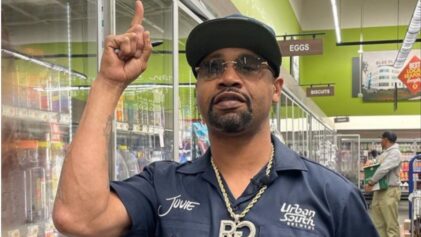Eight years ago today, Hurricane Katrina roared through the Gulf Coast, bringing unimaginable death, damage and disaster along with its vicious winds. In New Orleans, where an estimated 1,833 people perished, the return to normalcy has been uneven, with the mostly white areas completely rebuilt and re-inhabited, while black neighborhoods like the Lower 9th Ward have seen a far different story.
Hurricane Katrina was a watershed moment in the racial history of the nation, as Americans watched in horror as black and poor residents of the city were left stranded by the federal government for days, left to die on the streets of the city while President Bush flew by in Air Force One.
With more than 600,000 people left homeless and damage estimates reaching $125 billion, Katrina tore a giant hole in the confidence many Americans have in their government—and also the belief many New Orleans residents have about the safety of their city.
Only 30 percent of the residents in the low-income neighborhood known as the Lower 9th Ward have returned, compared to 90 percent in the rest of the city. In New Orleans, any neighborhood that has the word “lower” in the title is probably not going to fare very well during hurricane flooding.
Lower 9th Ward resident Joyce Morris told Al-Jazeera that it took her almost six years to rebuilt her home, using money from the federal “Road Home” program.
“My whole house was underwater. The whole entire house was underwater,” Morris said. She has returned, but most of her neighbors have not.
“We’re not exaggerating when we say these things … people are scared to come back,” she said.
A group of elected officials, community activists and religious leaders gathered yesterday to urge the government to rebuild the state’s coastline. They also called attention to the effects of climate change, according to The New Orleans Times-Picayune.
Climate change has touched off rising sea levels, disappearing coastlines and more frequent storms, the group claimed.
“In the past eight decades, Louisiana has lost 1,880 square miles of coastal marshes or an area about the size of Manhattan,” Norma Jean Sabiston of the Climate Action Committee Louisiana told the Times-Picayune. “It is land that Louisiana and our nation cannot afford to lose.”
In the Lower 9th Ward, residents are participating in a two-day observance that includes documentary screenings and a photo exhibit.
“You think about how things used to be – your neighbors up the street. And in many ways we still haven’t seen a lot of people,” 9th Ward resident Ben Lemoine told Al- Jazeera. “There’s people, to this day, I wonder what happened to them, where they are. It’s those question marks in your head that sometimes make you a little sad.”
According to a government report on the 1.5 million evacuees of the Gulf Coast, African-American residents were less likely to return to their homes than whites—54 percent of African-American evacuees returned compared to 82 percent of white evacuees.
In addition, according to a 2010 Amnesty International report, of the billions of dollars paid out to Katrina victims, residents in non-white areas were paid less than those living in mostly white communities—leading to a complete lack of redevelopment in specific communities and neighborhoods like the Lower 9th Ward.


